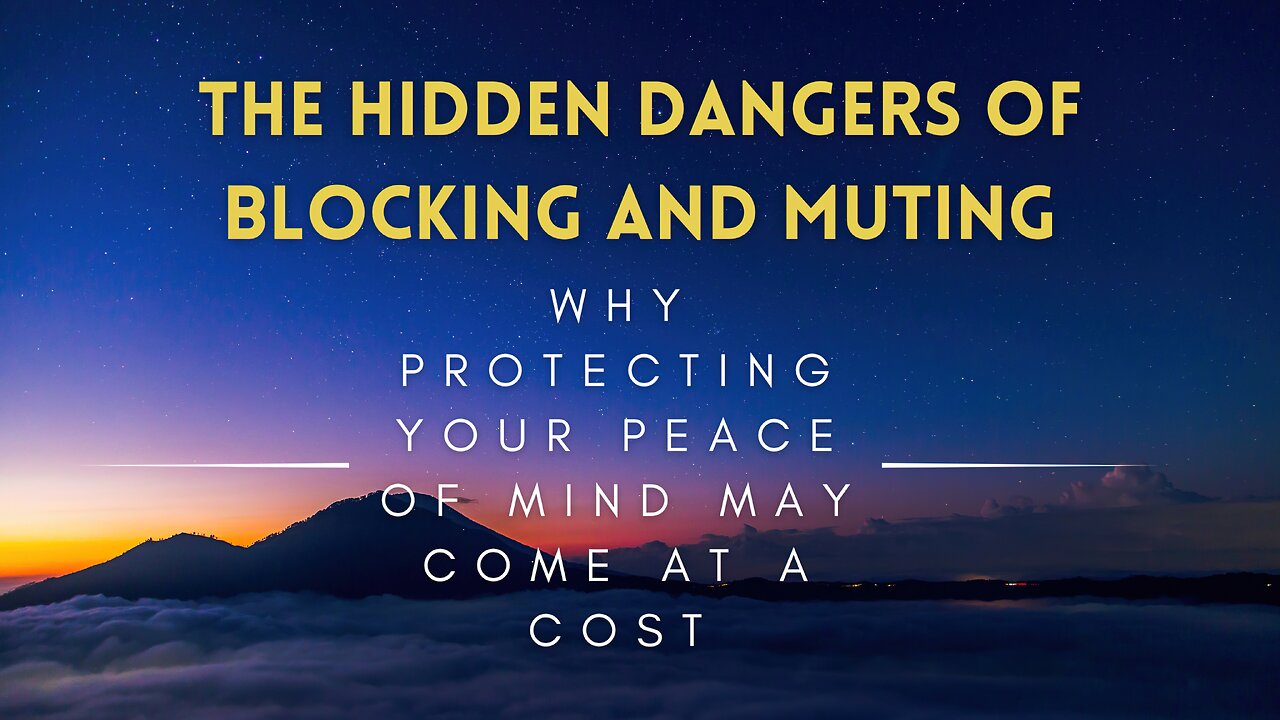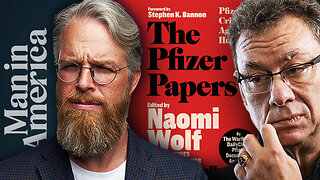Premium Only Content

10 - The Hidden Dangers of Blocking and Muting - Why Protecting Your Peace of Mind May Come at Cost
In this episode, "The Hidden Dangers of Blocking and Muting: Why Protecting Your Peace of Mind May Come at a Cost", we take a deep dive into the complexities of social media etiquette. While blocking or muting on social media can shield us from negativity, it also harbors unforeseen consequences like echo chambers, cyberbullying, and missed opportunities for personal growth and understanding. Tune in as we unravel the true implications of these actions and discuss how to strike a balance between maintaining mental health and nurturing meaningful dialogue online.
#socialmedia #mentalhealth #onlineharassment #echochambers #cyberbullying #onlinerelationships #socialjustice #legalimplications #onlineprivacy #personalgrowth #diverseperspectives #ethicalconsiderations #freedomofexpression #blockingandmuting
References for Further Reading:
Baym, N. K. (2010). Personal Connections in the Digital Age (1st edition). Polity.
Citron, D. K. (2016). Hate Crimes in Cyberspace (Reprint edition). Harvard University Press.
Debatin, B., Lovejoy, J. P., Horn, A.-K., & Hughes, B. N. (2009). Facebook and Online Privacy: Attitudes, Behaviors, and Unintended Consequences. Journal of Computer-Mediated Communication, 15(1), 83–108. https://doi.org/10.1111/j.1083-6101.2009.01494.x
Friggeri, A., Adamic, L., Eckles, D., & Cheng, J. (2014). Rumor Cascades. Proceedings of the International AAAI Conference on Web and Social Media, 8(1), 101–110. https://doi.org/10.1609/icwsm.v8i1.14559
Fung, A., Gilman, H. R., & Shkabatur, J. (2013). Six Models for the Internet + Politics. International Studies Review, 15(1), 30–47. JSTOR.
Garrett, R. K. (2009). Echo chambers online?: Politically motivated selective exposure among Internet news users. Journal of Computer-Mediated Communication, 14(2), 265–285. https://doi.org/10.1111/j.1083-6101.2009.01440.x
Gillespie, T. (2018). Custodians of the Internet: Platforms, Content Moderation, and the Hidden Decisions That Shape Social Media (Illustrated edition). Yale University Press.
Hawkins, V. (2016). Communication and Peace (J. Hoffmann, Ed.; 1st edition). Routledge.
Konrath, S. H., O’Brien, E. H., & Hsing, C. (2011). Changes in Dispositional Empathy in American College Students Over Time: A Meta-Analysis. Personality and Social Psychology Review, 15(2), 180–198. https://doi.org/10.1177/1088868310377395
Kowalski, R. M., Giumetti, G. W., Schroeder, A. N., & Lattanner, M. R. (2014). Bullying in the digital age: A critical review and meta-analysis of cyberbullying research among youth. Psychological Bulletin, 140(4), 1073–1137. https://doi.org/10.1037/a0035618
Marwick, A. E., & Boyd, D. (2014). Networked privacy: How teenagers negotiate context in social media. New Media & Society, 16(7), 1051–1067. https://doi.org/10.1177/1461444814543995
Mental Health Foundation. (2016). Relationships in the 21st century: The forgotten foundation of mental health and wellbeing. https://www.mentalhealth.org.uk/sites/default/files/2022-06/MHF-Relationships-21st-Century-Summary-Report.pdf
Twenge, J. M., & Campbell, W. K. (2018). Associations between screen time and lower psychological well-being among children and adolescents: Evidence from a population-based study. Preventive Medicine Reports, 12, 271–283. https://doi.org/10.1016/j.pmedr.2018.10.003
Valkenburg, P. M., & Peter, J. (2011). Online Communication Among Adolescents: An Integrated Model of Its Attraction, Opportunities, and Risks. Journal of Adolescent Health, 48(2), 121–127. https://doi.org/10.1016/j.jadohealth.2010.08.020
Van Dijck, J. (2013). ‘You have one identity’: Performing the self on Facebook and LinkedIn. Media, Culture & Society, 35(2), 199–215. https://doi.org/10.1177/0163443712468605
-
 4:16:43
4:16:43
JdaDelete
5 hours ago $2.00 earnedProject Zomboid with the Boys | The Great Boner Jam of 2025
16.6K -
 LIVE
LIVE
SpartakusLIVE
5 hours agoYoung Spartan STUD teams with old gamers for ultimate BANTER with a SMATTERING of TOXICITY
986 watching -
 1:50:39
1:50:39
Kim Iversen
7 hours agoShocking Proposal: Elon Musk for Speaker of the House?! | IDF Soldiers Reveal Atrocities—'Everyone Is a Terrorist'
52.2K104 -
 43:27
43:27
barstoolsports
10 hours agoOld Dog Bites Back | Surviving Barstool S4 Ep. 9
82.1K3 -
 5:13:04
5:13:04
Right Side Broadcasting Network
7 days agoLIVE REPLAY: TPUSA's America Fest Conference: Day One - 12/19/24
157K25 -
 1:06:01
1:06:01
Man in America
1 day agoPfizer Has Been Caught RED HANDED w/ Dr. Chris Flowers
32K11 -
 2:24:15
2:24:15
Slightly Offensive
8 hours ago $10.31 earnedAttempted ASSASSINATION of Nick J Fuentes LEAVES 1 DEAD! | Guest: Mel K & Breanna Morello
27.5K17 -
 1:43:08
1:43:08
Roseanne Barr
7 hours ago $18.15 earned"Ain't Nobody Good" with Jesse Lee Peterson | The Roseanne Barr Podcast #79
66K32 -

The StoneZONE with Roger Stone
4 hours agoTrump Should Sue Billionaire Governor JB Pritzker for Calling Him a Rapist | The StoneZONE
45.2K5 -
 1:36:58
1:36:58
Flyover Conservatives
23 hours agoAmerica’s Psychiatrist Speaks Out: Are We Greenlighting Violence? - Dr. Carole Lieberman | FOC Show
29.1K5